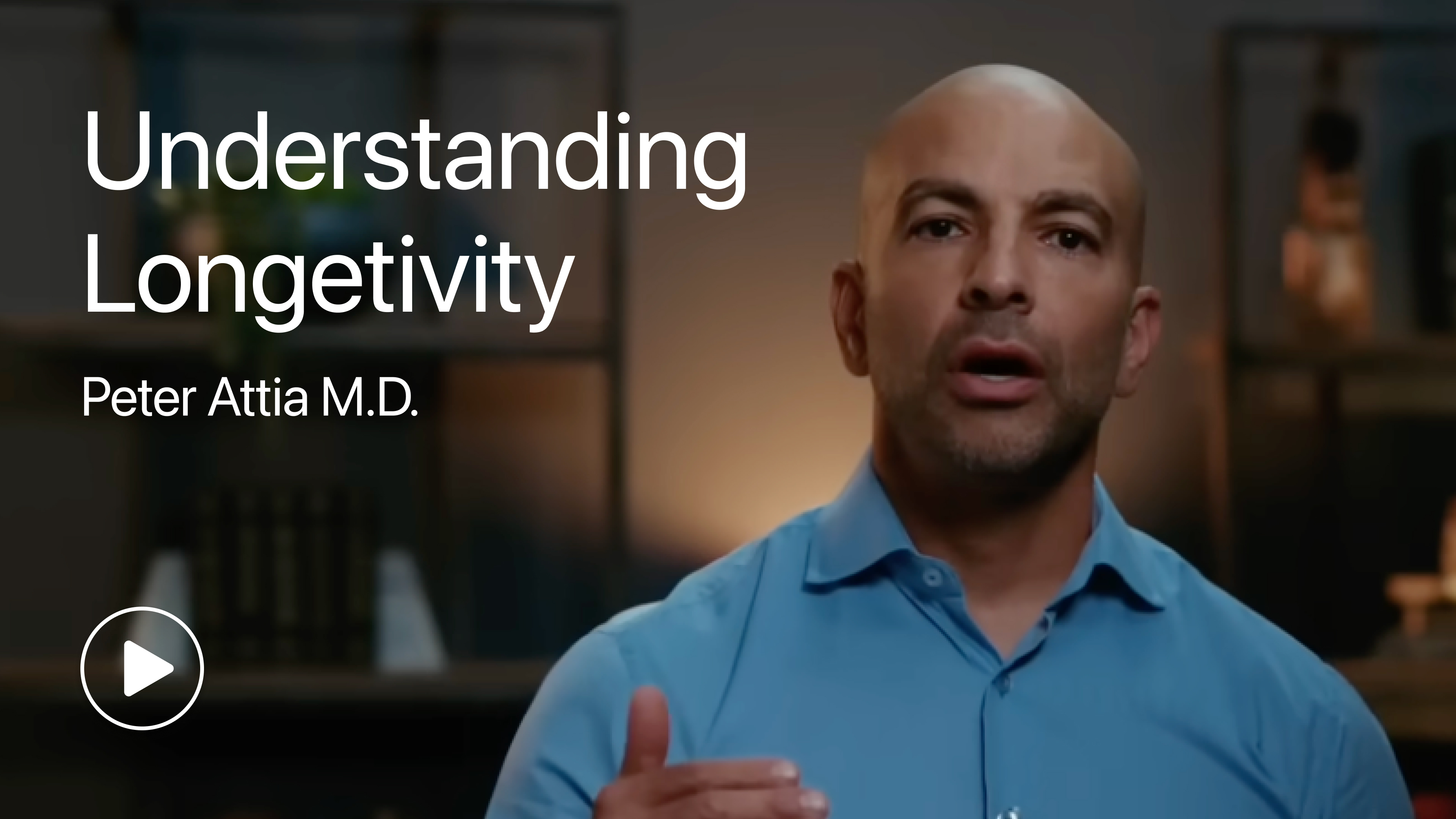Healthspan, Lifespan, and the Missing Link: Air
Are you living longer, or are you living better?
It’s a simple question, but one that cracks open one of the biggest debates in health and wellness today. On one hand, modern medicine has given us tools to stretch out our lives, pushing average lifespans higher than ever. On the other hand, many of us are watching friends and family spend their last decades in and out of hospitals, struggling with chronic illness.

This is where the idea of healthspan vs lifespan comes in, and why experts like Peter Attia, Andrew Huberman, David Sinclair, and even biohacker Bryan Johnson keep talking about it.
Lifespan vs Healthspan: What’s the Difference?
Lifespan is the number of years you live. If you’re born in 1960s Jakarta and live to 80, that’s your lifespan.
Healthspan, however, is the number of those years you actually spend healthy, strong, and independent. If you live to 80 but spend the last 20 years struggling with diabetes, cardiovascular disease, or cognitive decline, then your healthspan was really 60 years.
The best way to picture this is the classic chart:
- Imagine a long bar representing your life. That’s lifespan.
- Now shade in the portion where you’re active, mobile, sharp, and energetic. That’s healthspan.
- The unshaded years at the end, still technically alive, but limited by illness, that’s the gap most of us want to shrink.
Dr. Peter Attia often says his mission isn’t just to live longer but to maximize “the area under the curve of healthspan.” Sinclair, one of the world’s leading longevity researchers, echoes this: living to 120 isn’t meaningful if you’re frail for the last 40 years. And Huberman constantly reminds his audience that lifestyle choices today, especially sleep and exercise, change the trajectory of that curve.
The Health Equation
So, what drives healthspan?
Across the board, these experts converge on a set of inputs, what we’ll call the health equation:
Health = Nutrition + Sleep + Exercise + Mental Wellness
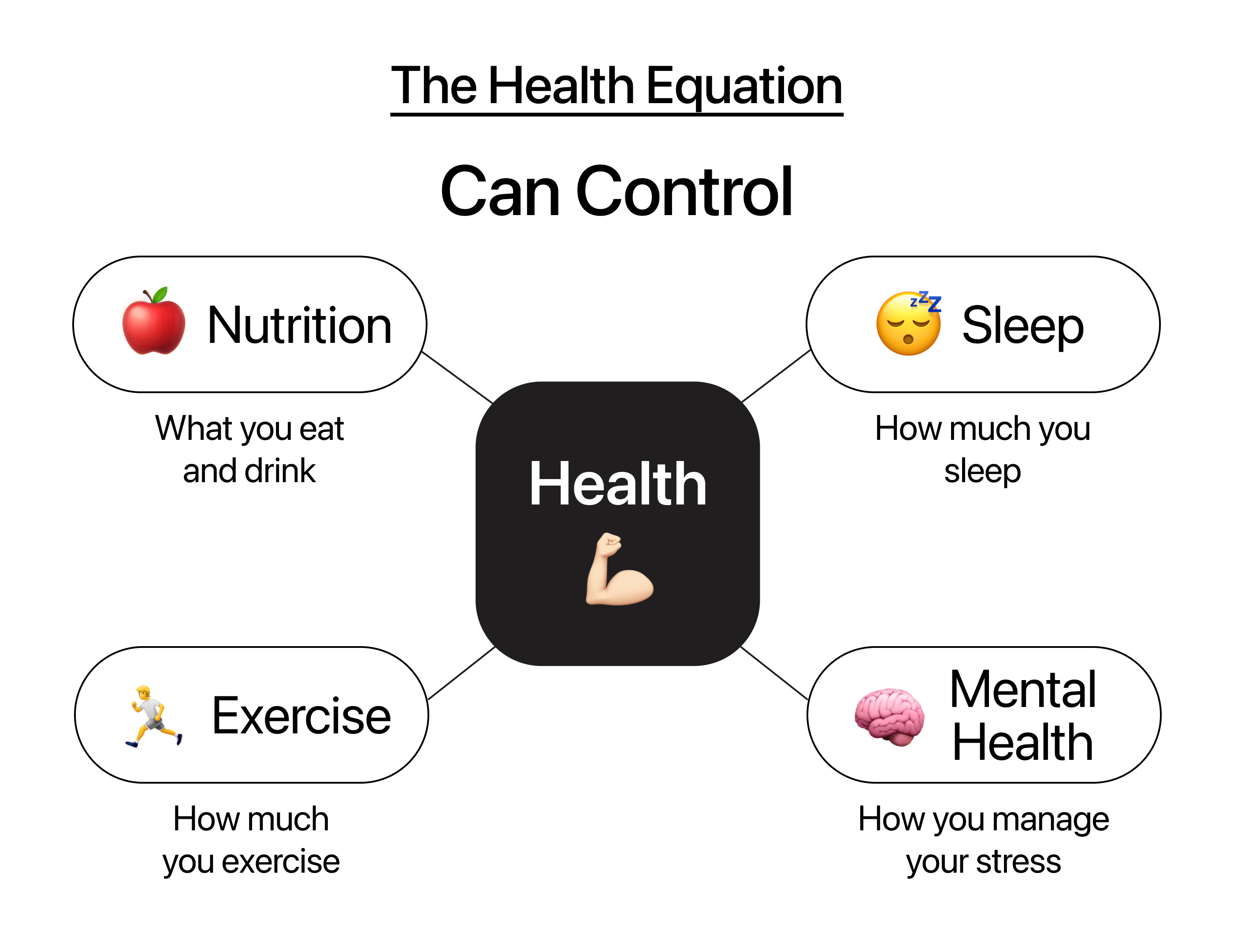
- Nutrition → Attia calls diet “the most confusing and debated input,” but the science is clear that reducing ultra-processed foods, managing blood sugar, and getting enough protein are essential. Bryan Johnson may go to extremes with his meticulously planned diet, but the principle is the same: food is information for our cells.
- Sleep → Huberman describes sleep as the foundation of mental and physical health. It’s when we consolidate memories, clear toxins from the brain, and repair tissue. Without good sleep, every other input suffers.
- Exercise → Attia often says exercise is “the single most potent longevity drug.” Strength training preserves muscle mass, while zone 2 cardio improves mitochondrial health. In other words: lift heavy, move often, and train your heart.
- Mental Wellness → Stress resilience, emotional health, and relationships all matter. Sinclair’s research even shows how chronic stress accelerates aging at the cellular level. Johnson emphasizes meditation and stress-reducing practices as much as supplements or tech.
Put together, this equation gives us the framework to extend our healthspan, not just lifespan. But here’s the big difference compared to a generation ago: today, we can measure these inputs every single day.
Data in Our Hands: The Rise of Health Trackers
Think about how mainstream it’s become to talk about your step count or sleep score. Ten years ago, you’d get a blank look if you mentioned your HRV. Today, people compare their recovery scores over coffee.
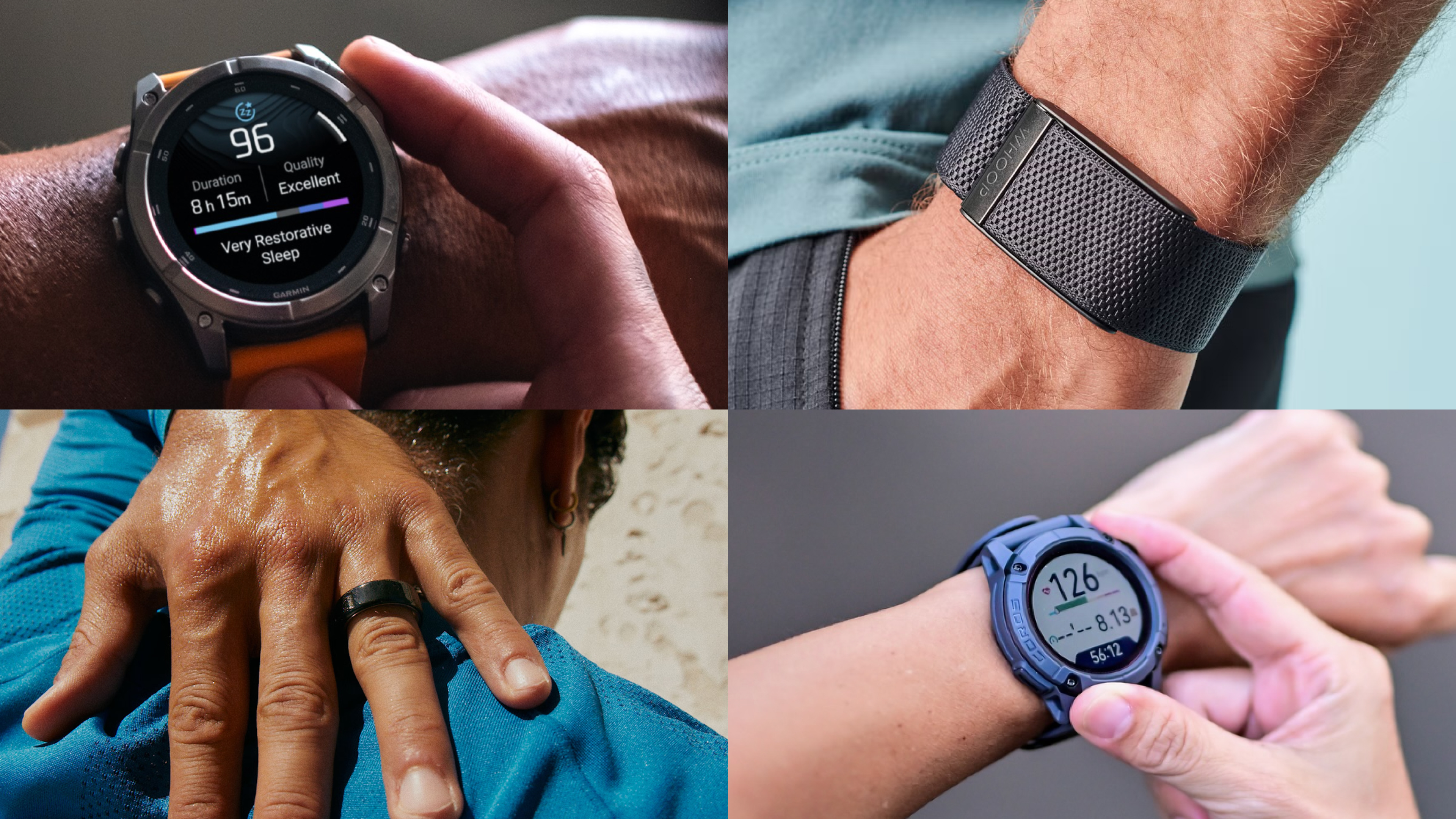
Devices like Whoop, Oura, Ultrahuman, Garmin, Fitbit, and the Apple Watch have made health data part of our everyday lives.
- Sleep → Oura gives you a readiness score each morning, while Whoop shows how much slow-wave and REM sleep you actually got.
- Exercise → Garmin tracks your VO₂ max, while Ultrahuman overlays glucose and recovery to tell you if your workout really helped or hurt.
- Mental Wellness → HRV has become a proxy for stress and nervous system resilience.
- Nutrition → Continuous glucose monitors now let you see in real time how your meals affect your body.
This is powerful. It’s one thing to be told “sleep 8 hours.” It’s another to see your recovery score tank after binge-watching Netflix until midnight. As Huberman often says, “What you can measure, you can change.”
Health trackers close the loop. They help us run our own N=1 experiments, adjusting diet, workouts, and routines in ways that extend healthspan.
But here’s the catch: what if we’re tracking the wrong things?
The Missing Context: Environment
Let’s take Jakarta as an example. You’ve nailed your sleep routine, you’re clocking 10,000 steps, your HRV is improving, your diet is clean. But every day, you’re also breathing in PM2.5 levels several times higher than what the WHO considers safe.
That’s the part of the equation no one talks about. Environment.
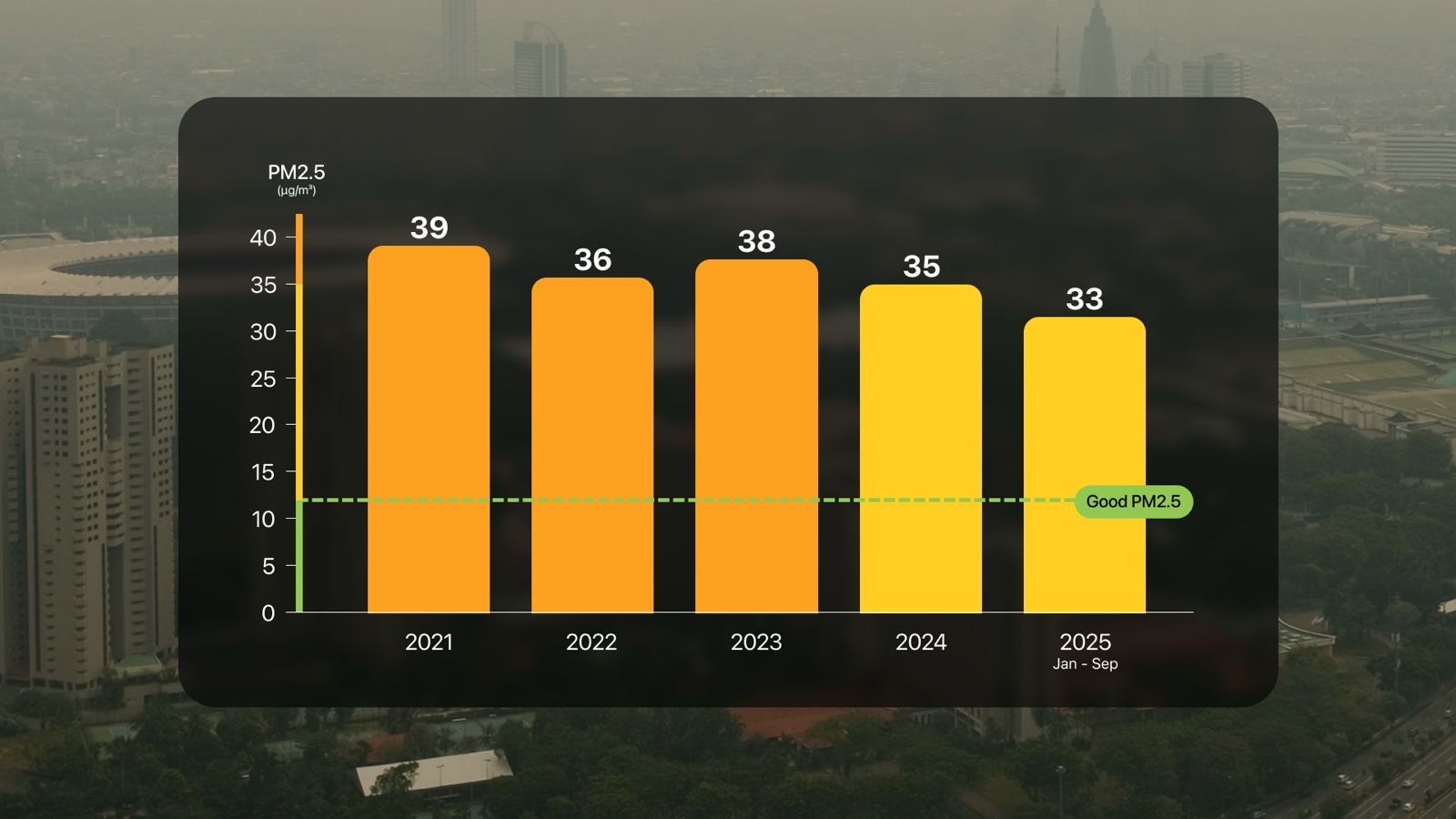
At Nafas, we’ve spent the last five years building Indonesia’s largest air quality monitoring network. And what we’ve seen is that in a city like Jakarta, focusing only on the four pillars, nutrition, sleep, exercise, mental wellness, is not enough.
Here’s why:
- Sleep → A study published in the Kosin Medical Journal showed that air pollution disrupts sleep quality, leading to more awakenings and shorter deep sleep stages. If the air in your bedroom is polluted, you’re starting every day at a deficit.
- Exercise → Training outdoors on polluted days can do more harm than good. Research shows higher PM2.5 exposure reduces exercise performance and slows recovery, as the body is already dealing with oxidative stress from pollutants.
- Productivity → Nafas’ own collaboration with Halodoc found that for every 10 µg/m³ increase in PM2.5 in Jabodetabek, telehealth consultations rose by up to 34% within 48 hours. Translation: when the air gets worse, people get sick fast.
So yes, the health equation matters. But it’s incomplete without acknowledging the context we live in.
Wrapping Up: Is Air the Missing Link?
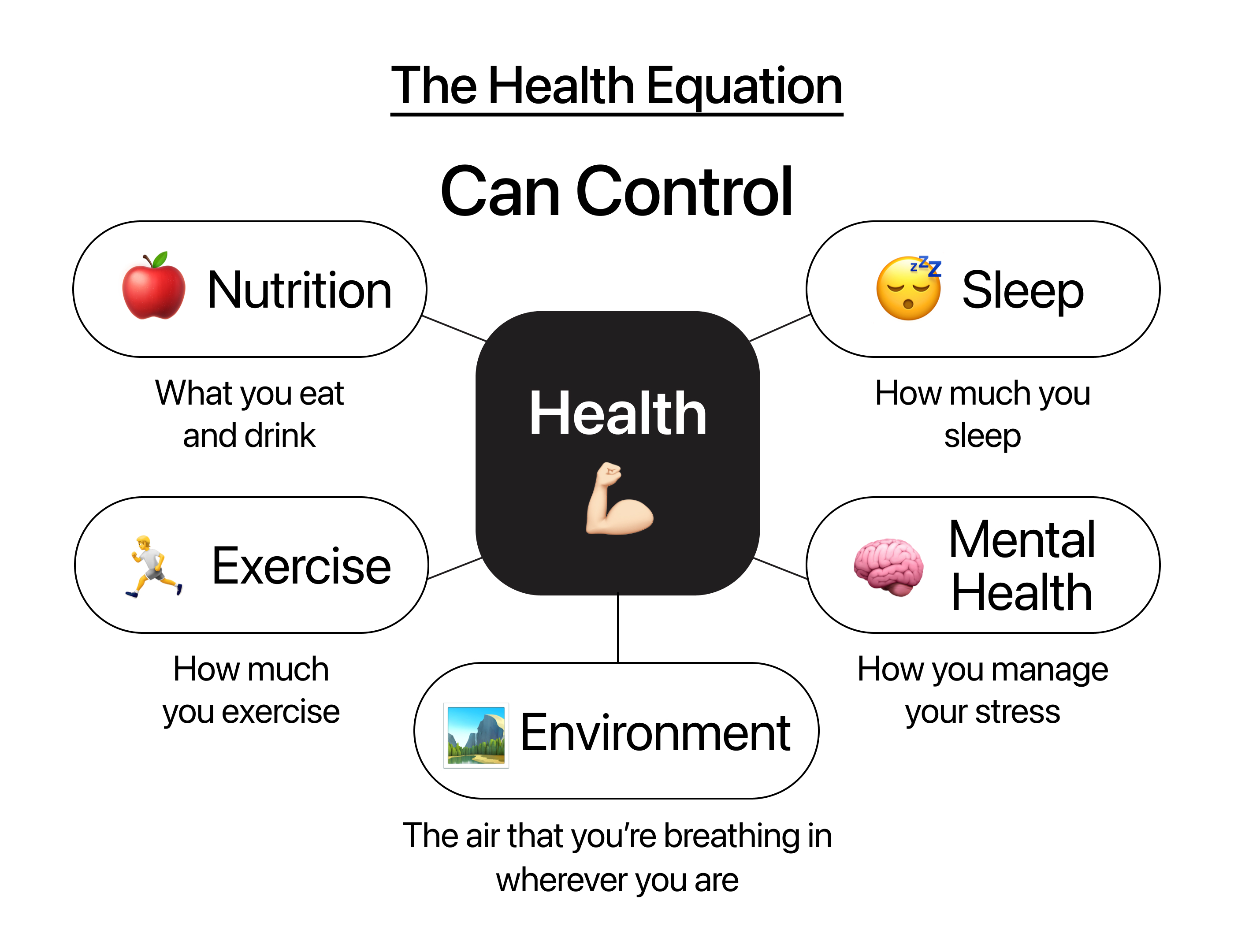
Today, the conversation about longevity usually circles around Nutrition + Sleep + Exercise + Mental Wellness. And thanks to health trackers, we can measure, adjust, and optimize all four.
But what if the missing piece, the one that quietly undermines every metric, is the air we breathe?
If you’re in a city like Jakarta, your HRV could be perfect, your workout dialed in, your sleep routine flawless, but polluted air will still chip away at your healthspan.
That’s why, at Nafas, we believe the next frontier in healthspan is connecting the dots between personal health tracking and environmental data.
So here’s the question we want to leave you with:
If you’re serious about healthspan, maybe the first thing you should measure isn’t your steps or your sleep score, but the air you breathe.
